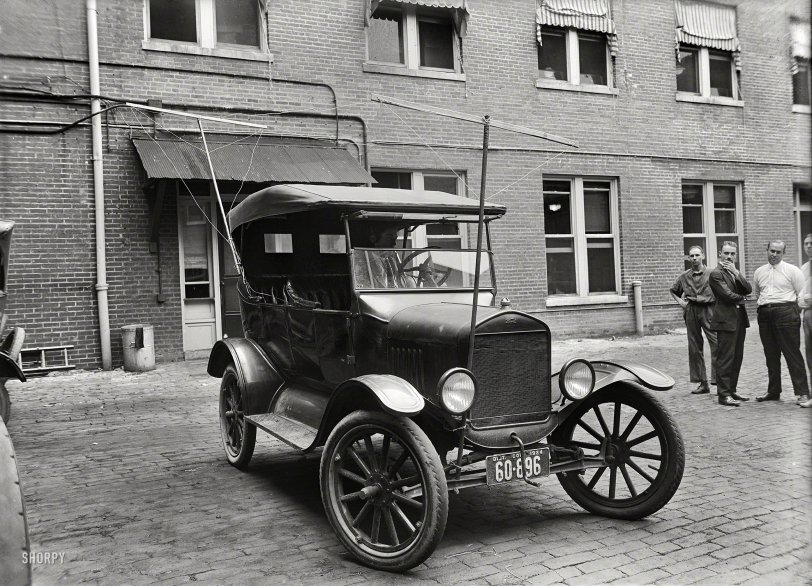


Framed or unframed, desk size to sofa size, printed by us in Arizona and Alabama since 2007. Explore now.
Shorpy is funded by you. Patreon contributors get an ad-free experience.
Learn more.

- S&P
- 1940 Zenith radio model 6G601
- Quality goes in before the name goes on!
- Snazzy skirt
- Carbon Arc Lamps
- Illuminate us
- I remember it well
- I can't prove it
- Complicated then, forgotten now
- Bryan-Stevenson
- Skinny is as skinny does
- How do you rest in peace
- Riding the footboards
- Alas, hidden from view
- Baldwin Diesels
- Exclusive pump
- Bananas, Oysters and Smokey Joe
- Details, Details
- What's that building to the left of the tower?
- Coal Barges
- Bromo-Seltzer
- Inner harbor
- The Basin
- What a headache!
- Giant stepladder?
- Yeah, it was cold
- Love those coats
- Link & Pin Days Remnant
- Baldwin 62303
- Baldwin VO-1000
Print Emporium
T-Tunes: 1924

1924. Washington, D.C. "Auto equipped with radio (made for Potomac Electric Power Co.)" Harris & Ewing Collection glass negative. View full size.
Vintage Flat-top antenna
This appears to be a version of the flat-top wire antenna which was the most common antenna in those days. It was a design adapted from ships where it was strung between the masts but it was not really very efficient for land use and in the 1930s was replaced by series-fed ground-insulated towers as the radiator which is still the standard antenna for AM radio broadcasting today.
A clever plan
He's waiting for a bolt of lightning to shoot down and propel him into 1985.
Fortunately for the driver
... the District of Columbia has no law against driving while wearing headphones.
Into the future
I'd like to see the rig they came up with in about 25 years for TV in a car.
Made with pride
"... made for Potomac Electric Power Co..."
Made? As in, someone did this for money? Particularly love the lashing technique, using rope to join the broom handle masts to the body. Clove hitch?
Reminiscent of those Internet collections of "redneck vehicles"... you know, the Caddy with a room air conditioner stuck through a rear window, and so on.
Quite a lashup
I especially enjoy the skeptical looks of the gentlemen on the right. The antenna supports look like they won't survive the bumps of travel for long, suggesting that this is a photo opportunity and not much more.
Early mobile installations received only, so claims that the power company could know the locations of its field units were glowing and exciting assertions of the new age of wireless. Dispatchers had to assume 1). their transmissions were received and understood, and 2). the hearers could respond and then followed orders.
Just think about the static generated by that T's engine!
Engineering issue
I predict that attaching your antenna mast to the *front leaf spring* works for about half-a-block before it falls off!
Radio use
From the December 1924 issue of Radio News, in an article titled "Radiophone Serves Power Company":
"By means of radio equipped automobiles and trucks, the central station knows their location at all times ... On the right is shown the radio station of the Potomac Electric Power Co. installed in the office building. "
I hope he's not changing the station while driving
The radios of the day required the user to adjust two or three dials to the same frequency to pick up the signal. That typically required at least two hands, leaving zero to attend to the T's controls.
Such a Practical Design
What could possibly go wrong?
























On Shorpy:
Today’s Top 5